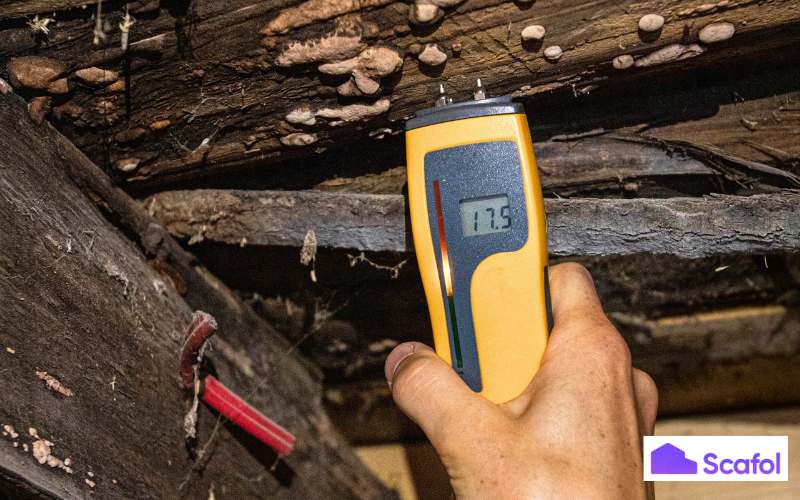
Alright fellow surveyor, let’s talk about something we both know all too well: Residential Home Surveys and their limitations. Every day, we crawl, poke and prod our way through these inspections. We try to keep our cool, act professional and maintain a stoical face when we uncover some of the… less-than-pleasant surprises lurking within or around a property. But let’s be real – we can’t see and diagnose everything without either specialist knowledge of certain elements or intrusive investigations and neither can we bottom out the cost of any identified repairs or improvements. And that’s the crucial point we need to emphasise to our clients: It’s the non-invasive nature of these surveys that means we have to recommend further investigations when necessary.
The Classic Surveyor’s Dilemma: The Survey is Just the Start
Look, we both know the drill. You show up, put on the “I’m the expert here” face and start your inspection. The property looks fine on the surface – maybe a couple of minor cracks here and there, some peeling paint, a few mouldy spots. Easy right? But here’s the thing – we can’t open up the walls, we’re not magicians and we certainly don’t have X-ray vision (other than a damp meter and possibly thermal imagery if correctly trained). So, when we spot something that seems a bit off, it’s our job to follow the trail, point out the obvious and pass the baton to the right experts when required.
What We Can Do: Spotting the Obvious Red Flags
When I first walk into a property, I’m thinking: What’s visible? What’s on the surface? What’s the thing that will make the client call me in a panic a few months later? We both know that surveys are non-invasive, so we’re stuck dealing with what we can physically see. It’s a bit like having a blindfold on – we can only judge the property by its surface-level features with the aid of some non-invasive tools as mentioned above and our experience of what may be lurking.
- Cracks in the walls – Could be cosmetic, could be subsidence. Either way, I’m making a note of it and looking for other related defects that may help diagnose an underlying issue.
- Elevated damp readings – Ooh, that musty smell or general staining to the wall? Although we can follow the trail and give our reasoning for causation, a good old damp survey is often required to bottom out costs.
- Dodgy electrics or plumbing – That flickering lightbulb? I can’t test the wiring but let’s make sure a professional takes a look.
The Real Talk: Why We Recommend Further Investigations
Here’s where we, as surveyors, have a responsibility to recommend further investigations. Yes, I know it’s tempting to leave it at “everything looks fine” but that’s not why they’re paying us. We’re the ones who can say, “That crack might be harmless but based on what we have seen and after following the trail, it could also be subsidence and guess what? That’s a big deal.”
- Damp is not always just damp. Sure, a bit of damp on the ceiling could just be from a leaky roof. But remember, damp can hide real nastiness (hello black mould). I’ve seen perfectly innocent-looking patches on the walls turn into full-blown health hazards after a surveyor took a moisture reading. It’s not just “water damage” – it’s an ecosystem. So, when I see it, I give my rationale and recommendations but often suggest my client call in a damp specialist.
- Asbestos: The silent killer. Ah, the joy of inspecting older properties. So many possibilities! And sometimes, one of those possibilities is asbestos. Now, I don’t have the tools to safely investigate asbestos on-site (no matter how much I’d love to put on a gas mask and pretend I’m a secret agent). If I find a little hint of something suspicious, I’m immediately waving the red flag.
- Structural issues: Cracks in the foundation? Get the engineer. You’ve seen it, I’ve seen it – that hairline crack in the living room wall that looks like nothing. But as I walk around the house, I start to connect the dots: This crack plus the uneven floors plus the slight bow in the window frame? Not a good sign. But can I break out the heavy machinery to dig through the floors? No, I cannot. This is where I hand it off to a structural engineer.
- Pests: The uninvited guests. No, we don’t carry around bug detection tools. And no, I don’t have a secret talent for hearing termites munching on wood. But when I spot chewed wood or droppings (and not the kind left by a cute little mouse) I make sure to pass that on to a pest control expert.
- Electrical and gas: We’re not plumbers or electricians. I don’t know if you’ve ever had a client tell you, “But the lights flicker sometimes” only to realise later that they’ve been living in a fire hazard? Yeah, that’s why I recommend an electrical inspection.
The Takeaway: Don’t Be Afraid to Recommend
At the end of the day, we’re not trying to scare the client. In fact, we’re trying to save them from spending thousands fixing problems that could have been avoided with the right inspections. So, when we spot something that’s outside our wheelhouse, let’s recommend further investigations. Whether it’s damp, pest control or a full-blown structural review, we’re here to be the first line of defence. But just because we can’t open up walls or pull up the floorboards doesn’t mean we’re off the hook. We’re not superheroes (unless we’re in the office on a Sunday – then maybe) but we are the detectives who spot the clues and hand the case over to the experts who can crack the case wide open. So, my fellow surveyor, remember: We spot, we report, we recommend. And when in doubt, recommend. Your client will thank you and you’ll sleep a lot better at night knowing you’ve done your job right.

















 Book a Demo
Book a Demo